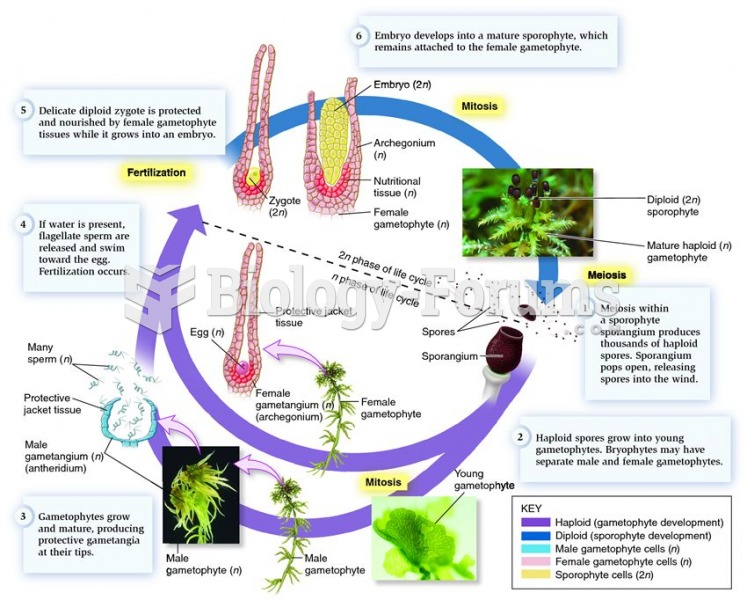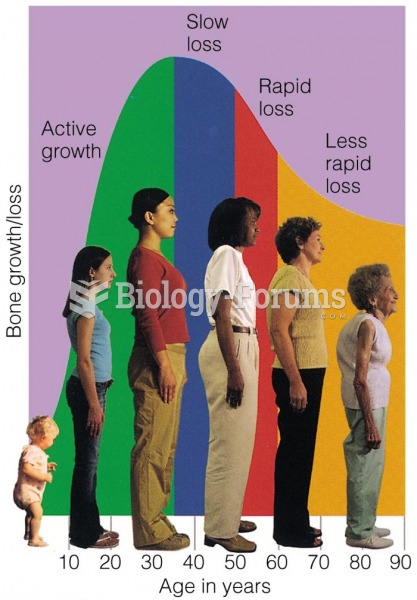|
|
|
To maintain good kidney function, you should drink at least 3 quarts of water daily. Water dilutes urine and helps prevent concentrations of salts and minerals that can lead to kidney stone formation. Chronic dehydration is a major contributor to the development of kidney stones.
A seasonal flu vaccine is the best way to reduce the chances you will get seasonal influenza and spread it to others.
This year, an estimated 1.4 million Americans will have a new or recurrent heart attack.
If all the neurons in the human body were lined up, they would stretch more than 600 miles.
To combat osteoporosis, changes in lifestyle and diet are recommended. At-risk patients should include 1,200 to 1,500 mg of calcium daily either via dietary means or with supplements.







